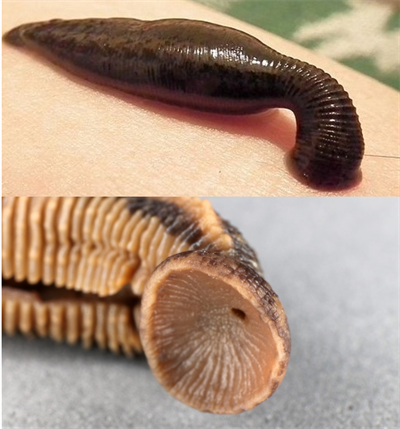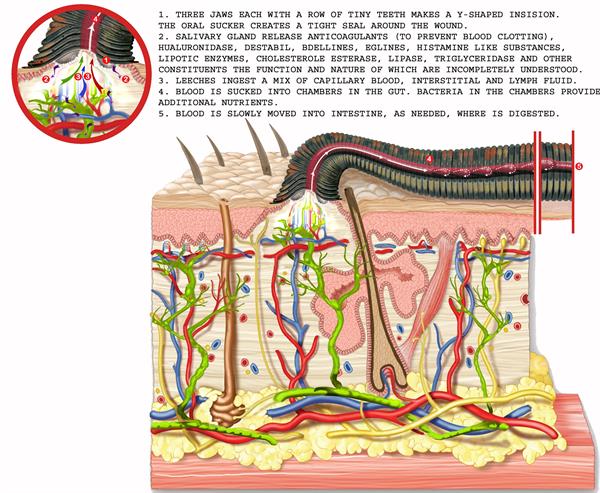
PUMPA - SMART LEARNING
எங்கள் ஆசிரியர்களுடன் 1-ஆன்-1 ஆலோசனை நேரத்தைப் பெறுங்கள். டாப்பர் ஆவதற்கு நாங்கள் பயிற்சி அளிப்போம்
Book Free DemoBefore going into the parasitic adaptations of leech the following terms need to be known.
- Parasite - When the organism lives inside or outside the body of another (host) organism for their nutritional requirements. Such organisms are called parasites.
- Parapodia - Organs of locomotion used both in creeping and in swimming.

*Anterior sucker of the leech
Leeches are parasitic creatures that feed on the blood of vertebrates. Show several major adaptations in their structure.

The step by step of process of suction by leech
The process of suction of blood:
- The pharynx suctions blood.
- The animal's anterior and posterior ends are provided with suckers that attach to the host's body.
- The three jaws inside the mouth create a non-painful Y-shaped wound in the host's skin.
- The salivary glands generate hirudin, which prevents blood from clotting. Thus, a steady supply of blood is maintained.
- There are no parapodia or setae to be found.
- The crop is used to store blood. It provides the leech with food for several months. Due to this reason, no extensive secretion of digesting fluids and enzymes occurs.
Important!
Medicinal value of Leech:
- Leeches are useful for improving blood circulation and dissolving blood clots. They can be utilised to treat cardiovascular disorders, which is surprising.
- Pharmaceutical medications that treat hypertension are made with biochemical components extracted from leech saliva.
- Blood letting is a bleeding method used to remove poisonous substances from a patient's body.
Reference:
https://upload.wikimedia.org/wikipedia/commons/thumb/7/77/Sucking_leech.jpg/512px-Sucking_leech.jpg
https://upload.wikimedia.org/wikipedia/commons/d/de/Med._Leech_suction_action._Hirudotherapy._01.jpg